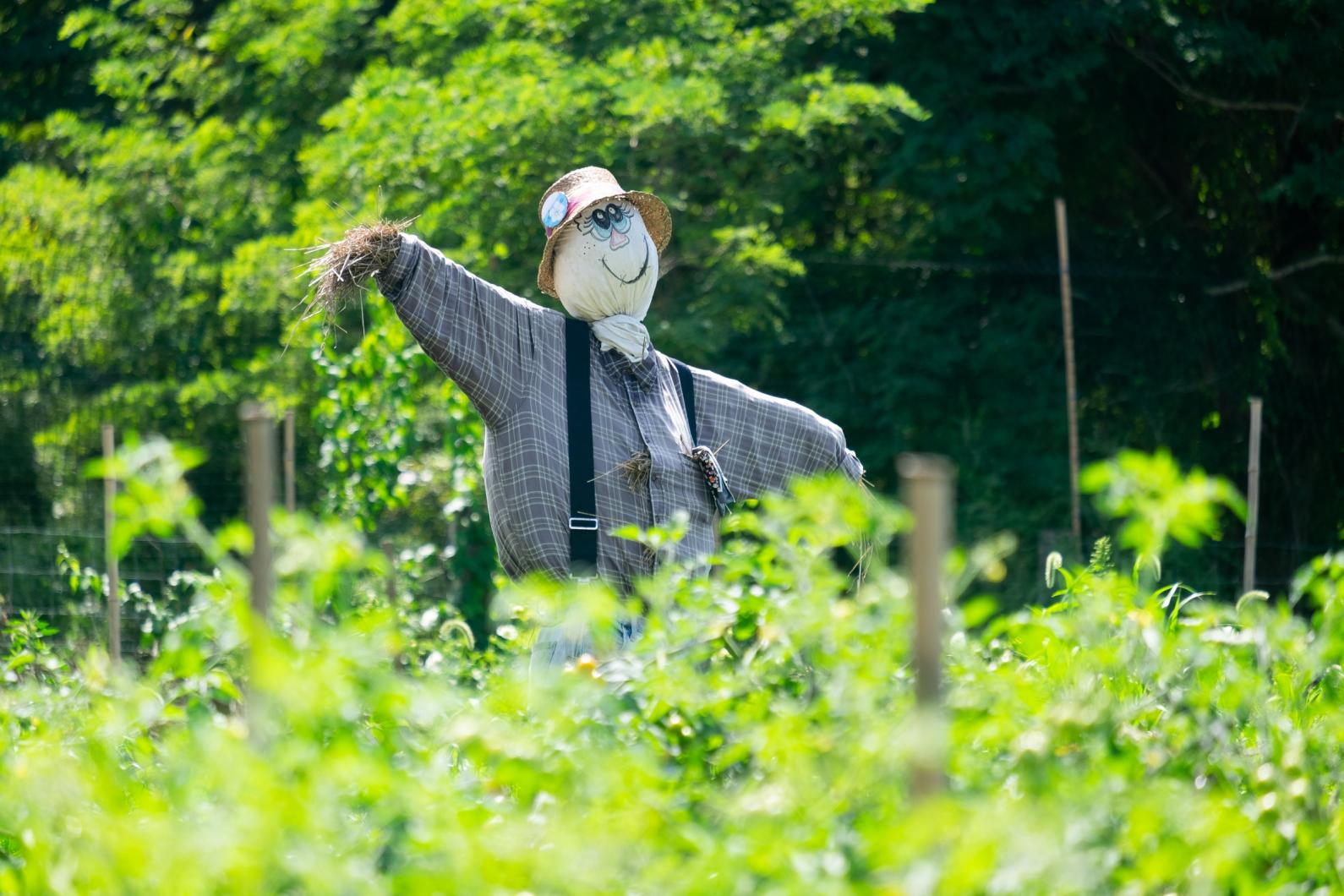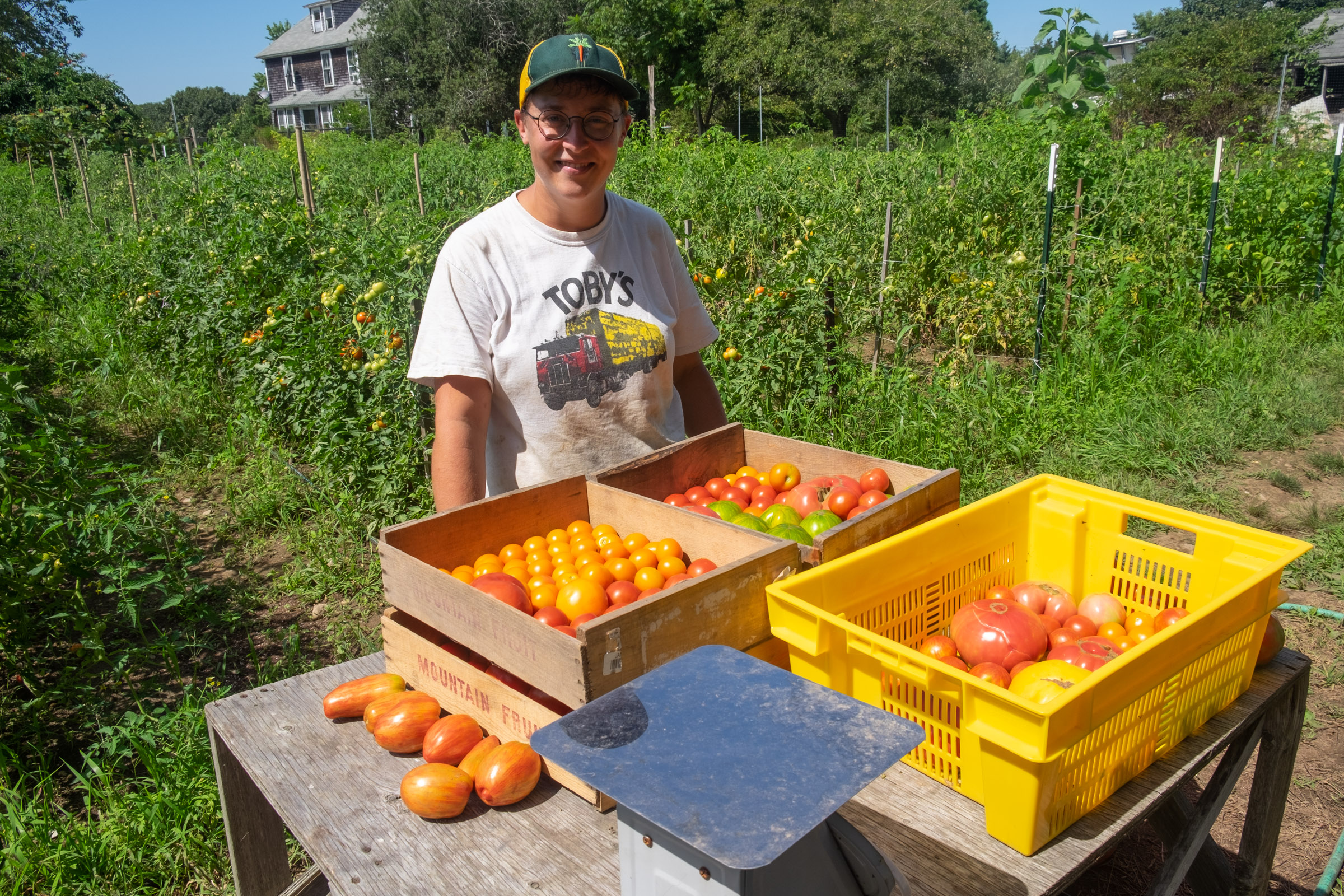It is late August, often a season of molds and weeds on Martha’s Vineyard farms.
Lydia Fischer, of the Garden Farm in West Tisbury, is harvesting the last of her basil crop, which is showing the first signs of downy mildew, a disease prevalent across New England farms by late summer. In addition to basil, it often infects cucumber and squash plantings and is particularly pervasive in warm, moist weather. Lydia will harvest the rest of her basil before the mildew spreads too deeply, selling the final haul to an on-Island chef.
Her field tomatoes, which are also susceptible to late-August molds, are still robust and healthy. Over the last week, the fruits have begun to ripen, and she is finding herself neglecting other farm tasks to keep up with the harvest.
“The weeds have definitely made themselves at home,” she says.
A late-August farm field can feel a bit overwhelming as weeds and crops fill the farm with robust growth. Sometimes it can be challenging to imagine reining it all in: removing waist-high weeds before they are able to go to seed, mowing-off old plantings, and preparing the land for the winter.
Lydia says she is already strategizing how best to break down all the growth in her field over the coming months. She is particularly concerned about the healthy crop of dock weed in her beds and is considering removing each seed head by hand before the weed can drop them to the soil.
The best farming advice I have ever been given was to be terrified of weeds.
If left unchecked, weeds can rapidly overtake crops, outcompeting them in water, food and light. In a bad year, when labor is short and the weeds are winning, the crops can be hard to find: melons hidden under robust kiss-me-over-the-garden-gate, baby greens consumed in purslane, zinnias emerging from waist-high grasses.
A single annual weed can generate up to 250,000 seeds in a season. If left to go to seed, the impact will be felt for many years afterwards.
Because of this, the history of a field can be read by its weeds. When we first plowed, turning over an old hay field for vegetable and flower production, our primary weeds were the grasses, wild carrot and poison ivy that inhabited the land before we disturbed it. Now, eight years in, our fields are filled with purslane, ragweed, lambs quarter, amaranth, kiss-me-over-the-garden-gate, nutsedge. Some less-threatening weeds are remnants of past plantings: rogue sunflowers, holy basil, rudbeckia. Others are brought in through compost and mulches and quickly multiply from season to season.
Weed management is all about timing. Ideally, every bed would be weeded at the “white-root” stage of growth, just as the weed’s cotyledons (the plant’s first leaves) appear from the soil, a light flush across the bed. At this stage, a farmer can run a hoe quickly and efficiently through the surface of the soil, killing thousands of unwanted weeds with each stroke. All is easy.
As the weeds grow, weeding becomes progressively more challenging. One day too late and the farmer must be a bit more forceful with her hoe, using more strength with less efficiency. A few days later, the weeds are knee-high and require more-tedious hand pulling. The farmer works her way down the row on all-fours, careful to avoid disturbing the main crop. A week after that and the weeds have tripled in size, and most likely the bed will need to be abandoned.
We have been short on labor this season, a fact that is apparent by the number of weeds that have settled into our field. We found a little time last week to mow the sections that had become particularly overgrown, some with weeds standing taller than our heads.
But rather than feel overwhelmed by their growth this season, I have been practicing valuing each weed for the biodiversity and organic matter it brings to the field. The sections that are most overgrown are alive with pollinators. In particular, the honey bees love the ragweed, a steady hum emerging from the thickest patches, each bee’s legs laden with yellow pollen. The weeds have provided a healthy cover on soil that would otherwise be bare, and, when we mow, all the growth will add organic matter back into the land.
This final week of August marks a shift in the farm season. Many of our customers will be heading off-Island, and the hectic pace of the summer farm field will suddenly dissipate. We are not too far off from harvesting our first fall crops: pumpkins, winter squash, sweet potatoes, Brussels sprouts. And with this change in season arrives the end of the Farm and Field column for the summer. Thank you for reading along.
Lily Walter is the owner of Slip Away Farm on Chappaquiddick.





Comments (2)
Comments
Comment policy »